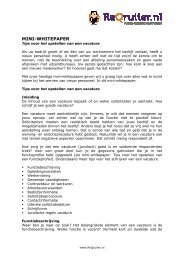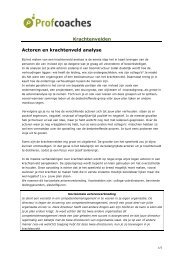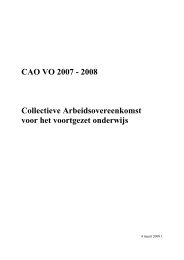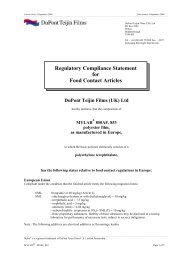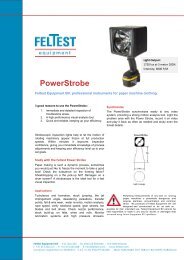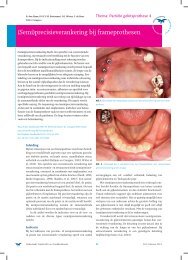Newborn screening in Europe Expert Opinion document
Newborn screening in Europe Expert Opinion document
Newborn screening in Europe Expert Opinion document
You also want an ePaper? Increase the reach of your titles
YUMPU automatically turns print PDFs into web optimized ePapers that Google loves.
FINAL 28/08/20114. Criteria to evaluate whether a <strong>screen<strong>in</strong>g</strong> programshould be performed (desirability)Early detection of disease can result <strong>in</strong> considerable health benefits. However, <strong>in</strong>evitably italso always implies negative effects. In the terms of Wilson and Jungner (1968):“The central idea of early disease detection and treatment is essentially simple. However, thepath to its successful achievement (on the one hand, br<strong>in</strong>g<strong>in</strong>g to treatment those withpreviously undetected disease, and, on the other, avoid<strong>in</strong>g harm to those persons not <strong>in</strong> needof treatment) is far from simple though sometimes it may appear deceptively easy.” (p.26)In 1968 Wilson and Jungner developed a set of <strong>screen<strong>in</strong>g</strong> criteria to balance pros and cons forthe WHO, that have become a classic <strong>in</strong> the doma<strong>in</strong> of <strong>screen<strong>in</strong>g</strong>: 391. The condition sought should be an important health problem.2. There should be an accepted treatment for patients with recognized disease.3. Facilities for diagnosis and treatment should be available.4. There should be a recognizable latent or early symptomatic stage.5. There should be a suitable test or exam<strong>in</strong>ation.6. The test should be acceptable to the population.7. The natural history of the condition, <strong>in</strong>clud<strong>in</strong>g development from latent to declared disease,should be adequately understood.8. There should be an agreed policy on whom to treat as patients.9. The cost of case-f<strong>in</strong>d<strong>in</strong>g (<strong>in</strong>clud<strong>in</strong>g diagnosis and treatment of patients diagnosed) shouldbe economically balanced <strong>in</strong> relation to possible expenditure on medical care as a whole.10. Case-f<strong>in</strong>d<strong>in</strong>g should be a cont<strong>in</strong>u<strong>in</strong>g process and not a “once and for all” project.These criteria have been built on by many authors. The EUNENBS considers them still valid,though not sufficient. The Wilson and Jungner criteria were consider<strong>in</strong>g one disease at a time,while high throughput technologies (genomics, metabolomics) have made <strong>screen<strong>in</strong>g</strong> forseveral diseases at a low price possible (pages 9 and 10). Some of these technologies willprovide more certa<strong>in</strong>ty that older <strong>screen<strong>in</strong>g</strong> tests did, thus blurr<strong>in</strong>g dist<strong>in</strong>ctions between<strong>screen<strong>in</strong>g</strong> and diagnostics. Furthermore, technology might drive decisions on what to screenfor, while Wilson and Jungner put the benefit for the <strong>in</strong>fant at the centre of deliberations.Several schemes of assessment have <strong>in</strong>creased the number of criteria, 40 where others havetried to reduce them. 41Several frameworks of criteria have built on Wilson and Jungner and further specifiedelements. The UK National Screen<strong>in</strong>g Committee <strong>screen<strong>in</strong>g</strong> criteria 39 for <strong>in</strong>stance alsomention that “all the cost-effective primary prevention <strong>in</strong>terventions should have been39 Wilson JMG, Jungner G. Pr<strong>in</strong>ciples and practice of <strong>screen<strong>in</strong>g</strong> for disease. Geneva: WHO; 1968. Available from:http://whqlibdoc.who.<strong>in</strong>t/php/WHO_PHP_34.pdf40 UK National Screen<strong>in</strong>g Committee. Criteria for apprais<strong>in</strong>g the viability, effectiveness and appropriateness of a <strong>screen<strong>in</strong>g</strong>programme. Available from: http://www.<strong>screen<strong>in</strong>g</strong>.nhs.uk/criteriaHealth Council of the Netherlands: Committee Genetic Screen<strong>in</strong>g. Genetic Screen<strong>in</strong>g. The Hague: Health Council, 1994;publication no. 1994/22E. ISBN 90-5549-073-3Available from: http://www.gezondheidsraad.nl/sites/default/files/94@22E.pdf41 Grosse SD, Rogowski WH, Ross LF, Cornel MC, Dondorp WJ, Khoury MJ. Population Screen<strong>in</strong>g for Genetic Disorders<strong>in</strong> the 21st Century: Evidence, Economics, and Ethics. Public Health Genomics 2010;13:106–115.23








